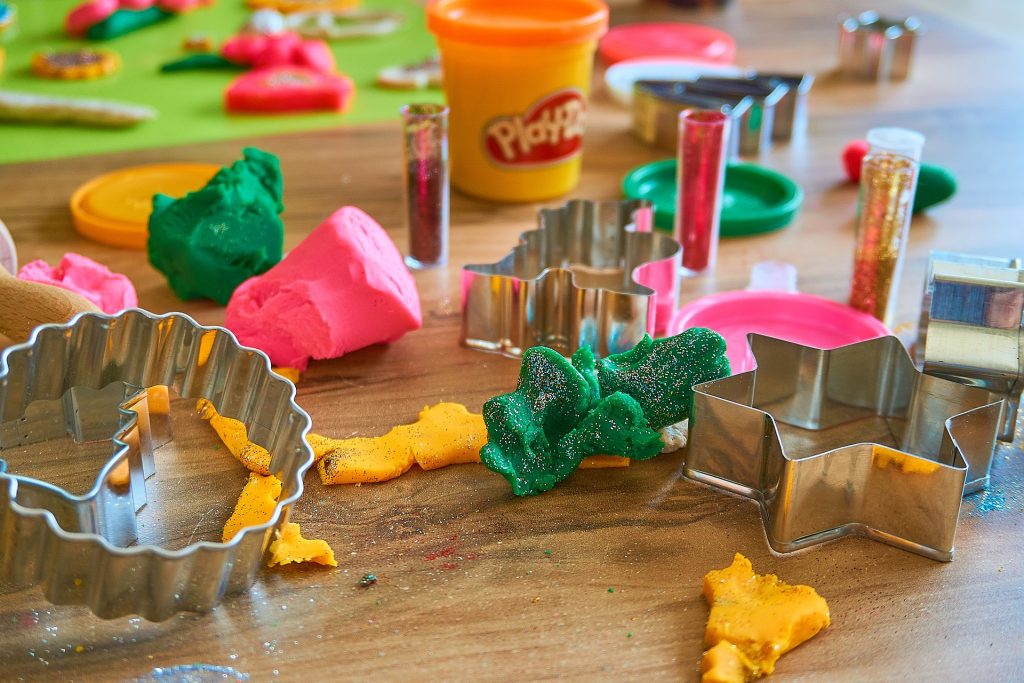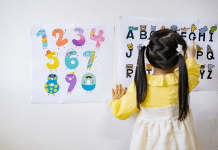My 3-year-old loves Play-Doh. She creates these epic adventures saving the world from all those creepy colorful Play-Doh monsters that she creates! No wonder there is a National Day to celebrate this amazing craft product that gives kids the joy of constructing and molding things into their world of play.
Cheers to Play-Doh
On September 16th, we recognize this fun and beloved childhood craft toy! Historically speaking, Play-Doh wasn’t originally created for children. This product was actually created as a wallpaper cleaner! What is more amazing is the fact that Play-Doh has been around for over 50 years.
 Children began by using the modeling compound of salt, flour, and water; by 1956, Play-Doh was on the move as modeling clay for children. Even though it began with only one color, by the end of 1957, you could buy Play-Doh in red, blue, and yellow. Imagine: an accidental toy, now a childhood treasure!
Children began by using the modeling compound of salt, flour, and water; by 1956, Play-Doh was on the move as modeling clay for children. Even though it began with only one color, by the end of 1957, you could buy Play-Doh in red, blue, and yellow. Imagine: an accidental toy, now a childhood treasure!
Check out these 3 fun facts about Play-Doh:
Smell Like Play-Doh
I am one of those people who love the smell of old books and crayons! Imagine my surprise when I found out, I could smell like Play-doh! Oh, what whimsical joy. That’s right, you can smell like a bottle of happiness! The fragrance was created to commemorate the 50th anniversary of Play-Doh. Purchase yours at the link!
Tricky Fingerprints
Did you know Play-Doh is perfect for making fingerprint molds? In 2005, researchers concluded that Play-Doh could make a perfect mold of a fingerprint. Play-Doh fingerprints could fool 90 percent of all the fingerprint scanners! Hey, don’t get any funny ideas. As a result, technology amped up the advancements, and today, the scanners are more sophisticated than dough.
A Beloved Toy
This fact comes as no surprise. In 1998, Play-Doh was inducted into the National Toy Hall of Fame at The Strong National Museum of Play in Rochester, New York! The Hall of Fame estimates that “kids have played with at least 700 million pounds of Play-Doh!”
Learning With Play-Doh
Change up the learning with these hands-on activities. Find something here for every age and stage:
Early Learning
Fall Leaves: Creating learning trays can allow children to manipulate Play-Doh with other textural items. This is a great way to strengthen creativity while interacting with their world. For example, looking at the texture of a leaf by creating an imprint allows the child to physically explore nature.
Fine Motor: Building fine-motor skills simply means strengthening the small muscles that control the hand, fingers, and thumbs. This helps little ones begin to perform tasks such as grasping smaller objects, writing, and drawing. Offering preschool students different fine motor activities is recommended by pediatricians to aid in the continued development of these muscles.
Science Activities
Baking Soda Volcano: With this activity, you can use tons of Play-Doh to cover your volcano and build the ecosystem surrounding it.
The Human Body: I absolutely love this activity!!!! Build knowledge about the different organs in the body as you build each organ with different colors of Play-Doh.
Color Theory: Using primary colors, this activity will allow children to experiment with color theory as they mix colors together to form new ones! Create a rainbow!
Planet Earth: From Earth’s inner core to the outer crust, this activity will allow your kinesthetic learner to explore the layers of the Earth.
Animal Cells: Cell membrane, nucleus, and cytoplasm, oh my! Let’s add some Play-Doh to the lesson and summarize the learning with a 3D model of an animal cell.
Explore and Learn
Make your own: For all those junior scientists out there, enjoy this science experiment as you make your own.
Exploring Numbers: Learning about numbers can be enhanced with a little Play-Doh. Allow your little to recognize numbers and how many make up each number with simple math games and molding activities. Instead of writing the number, build it!
Order your Play-Doh today and let the creating began!













